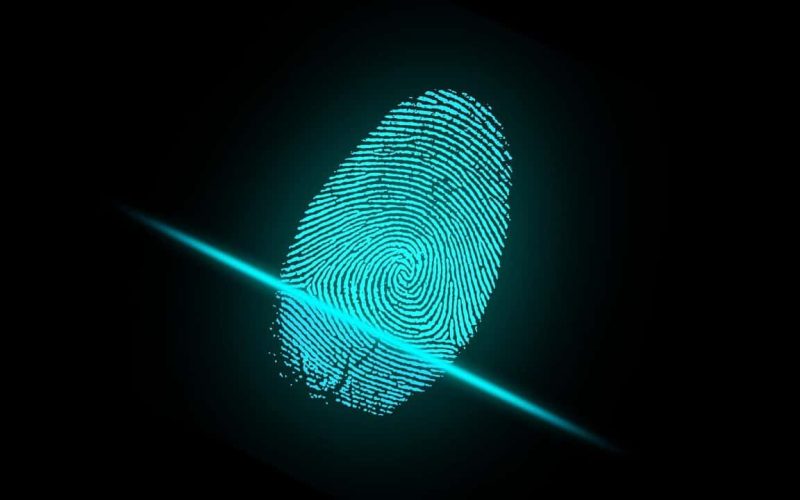In our digital age, it’s now become commonplace to sign documents online using what is known as a digital signature. This is an electronic replica of someone’s signature, which they can paste into documents, eliminating the need for printing and scanning. Alongside dramatically speeding up the process of signing documents, this also saves a great deal of hassle.
With the modernization of business, it’s incredibly common to find yourself needing to e-sign a document. While this certainly is convenient, many people are still worried about the possible security implications of moving to e-signatures over the tried-and-tested pen and paper method.
In this article, we’ll be exploring the main security benefits of using a digital signature, documenting exactly why these useful tools have because of the standard for industries around the world.
What is a Digital Signature?
Used when signing documents online, a digital signature is an electronic version of someone’s physical signature. These are typically based on cryptography, with two keys – one private and one public – being generated and assigned to the signature. These two keys are mathematically linked, with a connection being made between private and public keys.
When a user signs an electronic document, they assign their private key to the page and assign the recipient as the holder of the public key. This means that if a third party were to come across the contact, they wouldn’t have the public key, meaning they couldn’t access the document or the signatures inside. Only the intended recipient with the public key would be able to locate the document and see all its contents.
This two-layer method of encryption relies on mathematical techniques, ensuring that the signature is authentic and cannot be accessed by just anyone. Although many people are wary about digitizing signatures, these layers of protection services make them much safer than physical signatures.
Digital signatures are also incredibly easy to create, with users only needing to use an online signature generator platform. These will do the heavy lifting, converting your handwriting sample into a live, encrypted, and fully functional digital signature.
Why are Digital Signatures Safer Than Physical Ones?
While the majority of people focus on the inherent convenience of digital signatures, with their creation meaning that businesses can sign documents and send them off over email in a fraction of a second, this is not their only benefit.
Physical signatures have a very real possibility of being stolen and used in fraudulent activities. From financial fraud to stolen identities, physical signatures are easy to obtain and easy to copy, making them incredibly flimsy as a true line of defense.
Digital signatures, on the other hand, have several main benefits for security:
- Traceability
- Anti-Fraud Protection
- Tamper-Evidence Seal
- Authentic Dual-Verification
Let’s break these down further.
Anti-Fraud Protection
Fraud is one of the most commonly associated practices when it comes to physical signatures. Without even mentioning direct forgeries, finding old contracts which include full names of people, information about their jobs, their address, and their signature provide a valuable opportunity for those with nefarious intentions.
Due to the ease of tracing a signature, forging one, or using a document with this information as the grounds for identity theft, many people are hesitant about giving out their physical signatures. This is one of the main points of the basis for why electronic signatures have become so popular.
While one may think that an electronic signature could just be copied and pasted or lifted from one document to another, this is far from the truth. Electronic signatures have several layers of security that keep them safe:
- CRC – Whenever a change is detected with a file, a cyclic redundancy check (CRC) will detect if there are any errors. With this, any secure documents remain without errors and are very difficult to break into.
- CA – Certificate authority validation is where only certain parties are allowed to issue and maintain digital certificates. The widespread use of GAs ensures that fake digital certificates are almost impossible to create, with the stamp of the approval of the GA being a required document to attach when sending anything that needs to be signed electronically.
- TSP – Companies that offer digital documents for signing with frequency will have to partner with a trusted service provider. The partner TSP will validate all of their certificates and place further security measures on them.
All of these additional security features and verifications aren’t available with paper contracts, making electronic documents significantly more secure.
Authentic Dual-Verification
When using an electronic signature, companies often place a dual-verification strategy in place to ensure that the person that is using the digital signature is who they say they are. Instead of just being able to upload the signature onto a document or legal file, typically there is a second step of verification.
There could be several different forms of verification that are requested from the site to which a person attempts to upload their electronic signature to:
- Email Verification – The website will send an email with a verification code to the user’s email. By entering this code into the site, they will then be able to add their electronic signature.
- SMS Verification – Equal to email, but with a text message.
- ID Verification – The most extensive form of verification, this is a visual strategy where users have to take a selfie with one of their current ID methods.
- Knowledge-Based Verification – Users can set up a security question that’s connected to their signature. This could be a specific piece of information that only they know the answer to. By entering this answer correctly, they will verify their identity due to the personal knowledge that they have.
Although these are a few of the most common methods through which digital identity is verified, they are far from exclusive. Due to this two-step verification practice, digital signatures are even more secure as whoever is using the signature must have at least two means of proof that they are who they say they are.
While a phone number or email may be phished, it’s unlikely that an attacker can gain access to several forms of identity verification, meaning that their signatures are significantly more secure.
Tamper-Evidence Seal
When an electronic contract is signed between two parties, it is sealed by using what is known as Public Key Infrastructure (PKI). This is an industry-standard form of cryptography, with the document being permanently sealed.
If someone were to access the file or attempt to alter it after the date that both parties seal it, then the PKI would be broken. Once it is broken, the document is traced, with any changes or tracking being actively monitored. This helps ensure that no one tampers with the document after it was signed, helping individuals to make sure that they don’t accidentally sign contracts that are then amended after the fact.
Traceability
One of the main benefits of digital signatures is the fact that they are completely traceable. Alongside the above mention of PKI, they are also incredibly easy to trace. While this can be primarily used for security reasons, it also means that documents are very hard to misplace.
If either party needs to find or review the contract, they can use electronic searches through their files to rapidly encounter it. Equally, with electronic storage, digital contracts legitimized by digital signatures are very easy to store. Instead of paper contracts degrading over time, electronic records can be permanently stored without taking up much space.
When an individual is worried about storing, keeping, or maintaining their contracts, then the ease of digital signatures means this medium becomes a huge positive.
Final Thoughts
Digital signatures, although a fairly new technology, have swept across the world, being used in a range of different industries. With their vast convenience and applications in a range of different circumstances, they have become one of the most effective ways of rapidly signing contracts between parties in distinct locations.
Alongside the ease, speed, and convenience of digital signatures, their security is also a major benefit. Unlike physical signatures, digital emulations are much harder to steal due to the regulations and protocols created around them.
Although digital signatures are already incredibly powerful, we’re likely to see even more developments in this industry as they become further popularized around the world.









